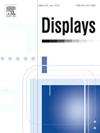基于三视图人脸图像的颞下颌关节盘移位初步筛选模型
IF 3.4
2区 工程技术
Q1 COMPUTER SCIENCE, HARDWARE & ARCHITECTURE
引用次数: 0
摘要
颞下颌关节(Temporomandibular joint, TMJ)椎间盘移位(disc displacement, DD)是一种临床常见病,发病早,发病率高。其病理变化影响面部轮廓,改变面部外观特征,扰乱面部正常生理活动。目前,MRI和CT是最常用的TMJ检查方法,但不适合大样本人群的原发性DD筛查。利用深度学习技术对基于人脸图像的DD进行初步筛选和识别具有重要的实用价值。本研究共建立了714个样本的三视图人脸图像DD数据集(TvFID3),其中无复位椎间盘移位(DDwoR)样本415个,复位椎间盘移位(DDwR)样本180个,正常TMJ (NOR)样本119个。每个样本包括一系列三重视图面部图像,包括正面,左侧和右侧视图。在此基础上,提出了一种基于三视图人脸图像的人脸识别分类模型。所有三视图人脸图像都经过人脸关键点和位置识别,然后进行裁剪和缩小,最后进行人脸对齐。在本研究中,我们重点关注TMJ椎间盘移位障碍的自动识别,特别是DDwoR和DDwR亚型的区分。对于模型开发,为了识别一般人群中的DD病例,我们训练了一个两类(DDwoR+DDwR和NOR)分类器,其准确率达到86.3%。随后,我们针对需要积极临床干预筛选管道的DDwoR病例,部署了二级两级(DDwoR和DDwR+NOR)分类器,分类准确率达到90.4%。我们的两级(DDwoR和DDwR+NOR)鉴别系统在DD的初级筛查中具有很强的临床应用潜力,可以可靠地区分病理和正常病例以及不同移位亚型。在线DD判别模型(https://itmjtech.medi7.cn (DDwoR和DDwR+NOR)为TMJ DD的初步筛查提供了一种经济、高效、便捷的解决方案。本文章由计算机程序翻译,如有差异,请以英文原文为准。
Primary screening model for temporomandibular joint disc displacement based on triple-view face images
Temporomandibular joint (TMJ) disc displacement (DD) is a common clinical condition characterized by early onset and a high incidence rate. Its pathological changes impact facial contours, modify facial appearance features, and disrupt normal physiological activities of the face. Currently, MRI and CT are the most commonly utilized methods for TMJ examination, but unsuitable for primary DD screening in large sample populations. The utilization of deep learning techniques for primary screening and recognition of DD based on face images holds significant practical value. A total of 714 samples Triple-view Face-Image DD dataset (TvFID) was established for this study, comprising 415 samples of disc displacement without reduction (DDwoR), 180 samples of disc displacement with reduction (DDwR), and 119 samples of normal TMJ (NOR). Each sample includes a series of triple-view face images encompassing frontal, left-side, and right-side views. Based on this facial DD dataset, the paper introduces a classification model for DD based on triple-view face images. All three-view face images undergo facial key-point and position recognition, followed by cropping and down-sizing, and finally face alignment. In this study, we focus on the automated discrimination of TMJ disc displacement disorders, specifically differentiating between DDwoR and DDwR subtypes. For model development, to identify DD cases within the general population, we trained a two-class (DDwoR+DDwR and NOR) classifier that achieved an accuracy of 86.3%. Subsequently, we deployed a secondary two-class (DDwoR and DDwR+NOR) classifier targeting DDwoR cases necessitating active clinical intervention in screening pipelines, which attained 90.4% classification accuracy. Our two-class (DDwoR and DDwR+NOR) discrimination system demonstrates strong potential for clinical application in primary screening of DD, offering reliable differentiation between pathological and normal cases as well as between different displacement subtypes. The DD discrimination model online (https://itmjtech.medi7.cn (DDwoR and DDwR+NOR) offers a cost-effective, efficient, and convenient solution for the primary screening of TMJ DD.
求助全文
通过发布文献求助,成功后即可免费获取论文全文。
去求助
来源期刊

Displays
工程技术-工程:电子与电气
CiteScore
4.60
自引率
25.60%
发文量
138
审稿时长
92 days
期刊介绍:
Displays is the international journal covering the research and development of display technology, its effective presentation and perception of information, and applications and systems including display-human interface.
Technical papers on practical developments in Displays technology provide an effective channel to promote greater understanding and cross-fertilization across the diverse disciplines of the Displays community. Original research papers solving ergonomics issues at the display-human interface advance effective presentation of information. Tutorial papers covering fundamentals intended for display technologies and human factor engineers new to the field will also occasionally featured.
 求助内容:
求助内容: 应助结果提醒方式:
应助结果提醒方式:


